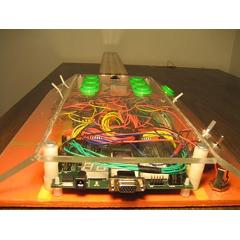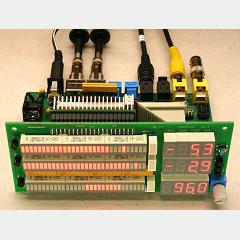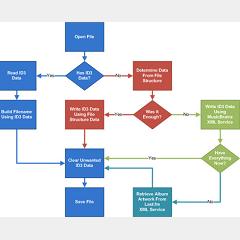Categories
- animatronics (12)
- apple (11)
- arduino (179)
- art (41)
- articles (121)
- artificial intelligence (11)
- automation (421)
- avr (205)
- bitcoin (3)
- breadboard (9)
- cameras (57)
- cars (26)
- cell phones (28)
- clothing mods (21)
- console mods (26)
- dangerous (94)
- desktop mods (24)
- embedded (5)
- flying things (54)
- fpga (22)
- gaming creations (108)
- interface (225)
- internet (17)
- laptop mods (6)
- lasers (22)
- linux (7)
- magnetic (3)
- medical (12)
- microcontrollers (51)
- misc projects (152)
- msp (12)
- music (124)
- pic (90)
- projects (23)
- pyroedu (76)
- raspberry pi (26)
- robots (312)
- security (36)
- sensors (307)
- software (200)
- solar (19)
- stamp (9)
- tools (149)
- tutorials (98)
- Uncategorized (45)
- usb (44)
- wireless (256)
Sponsors


Posted April 20, 2012 by Chris
“Here is another weekend hack that plays around with my midi to AVR conversion script and library. With xmas fast approaching I thought it would be fun to convert a pacman candy tin to an xmas ornament and have it play music. Below is the result, pressing a button on the tin will cycle through three Ms. Pacman songs converted from midi files found online.”

Posted April 17, 2012 by Chris
“Our project is a velocity sensitive hardware based piano. We simulated two strings per note using a Karplus Strong algorithm written in Verilog, and coupled it with a Casio electric piano keyboard fitted with custom switches to act as a user interface. On an Altera DE2 board we built a hardware Karplus-Strong synthesizer to simulate a piano key with two strings, along with a hardware timer. The timer was used to determine the key push’s velocity, which in turn affected the volume level of the synthesized sound.”

Posted March 2, 2012 by Chris
“Mike Davenport has hand-built an 8-bit “arcade guitar” synthesizer as part of a DIY senior project for his studies at the University of Florida. Inspired by classic video game consoles, it uses an FPGA (field-programmable gate array) for logic and function, and has strings and a joystick for adjusting the pitch and LFO rate, and even has selectable oscillator waveforms and memory locations.”

Posted February 19, 2012 by Chris
“It measures about 3cm x 1cm and is based around a 24pin ic holder. The notes are generated by software programmed onto a Picaxe 08M microcontroller which also has a small speaker mounted on it. It’s powered by a 9 volt battery.”

Posted February 7, 2012 by Chris
“An external circuit converts bass beat of music into pulses and the motor is controlled by them. If a bass beat is recognized then the motor rotates one direction (in full stepping) for a predefined time then stops. If the second beat comes in then it rotates again for the same time and so on.”

Posted February 1, 2012 by Chris
“The SudoGlove is a gesture controller that can be easily interfaced with hardware or software via a wireless connection. The glove implements an array of sensors plus filtering circuitry and mathematical analysis firmware to derive state values for each sensor and transmits them to an authorized receiver. I have used the glove to drive an RC car, to synthesize music, to manipulate openGL video, to control arbitrary processing software, and to control performance lighting effects.”

Posted December 29, 2011 by Chris
“I started this project more to gather some experience with FPGAs, rather than to design or own such a device, but it ultimately developed into a complete design, consisting of several boards.” The design is not over complicated and it’s a great example of how a simple FPGA project can turn into a useful tool for audio processing.

Posted December 1, 2011 by Syd
“In this article we are going to use the Last.fm web service to grab the last piece of data we need to make our music collection perfect: the album artwork. We’re going to use the same techniques we’ve used in the past articles to expand the functionality of our application to do something new. With the concepts we employed in the previous articles, the possibilities are nearly limitless.”

Posted November 12, 2011 by Chris
“The Shruthi-1 is a hybrid digital/analog monosynth. Its hardware design is deceptively simple, but the sonic range is wide: sometimes grungily digital like a PPG-Wave, fat and funky like a SH-101, videogame-y like a Commodore 64, weird and warm like an ESQ-1 ; but more often than not, truly original.”

Posted November 11, 2011 by Chris
This VHDL morse code keyer is written in VHDL by Jim Brady. He has posted the source (for a Xilinx Spartan 3A). He also posted his vintage keyer designs from the 1960’s and 1970’s. A nice throw back using some modern tech.







